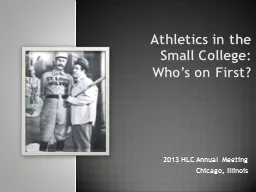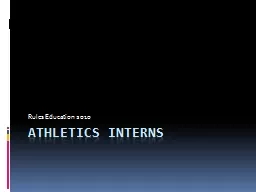PPT-Presentation on Athlete Development for Athletics
Author : danika-pritchard | Published Date : 2017-11-03
Summary Periodization Training by Age Sprints Phases Teaching Drills Periodization Periodization is the systematic planning of athletic or physical training
Presentation Embed Code
Download Presentation
Download Presentation The PPT/PDF document "Presentation on Athlete Development for ..." is the property of its rightful owner. Permission is granted to download and print the materials on this website for personal, non-commercial use only, and to display it on your personal computer provided you do not modify the materials and that you retain all copyright notices contained in the materials. By downloading content from our website, you accept the terms of this agreement.
Presentation on Athlete Development for Athletics: Transcript
Download Rules Of Document
"Presentation on Athlete Development for Athletics"The content belongs to its owner. You may download and print it for personal use, without modification, and keep all copyright notices. By downloading, you agree to these terms.
Related Documents














